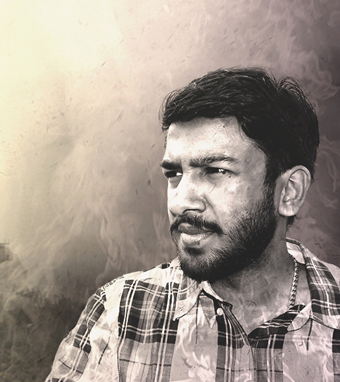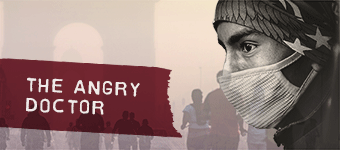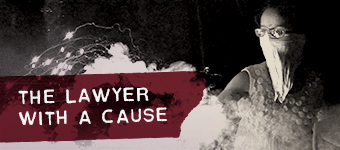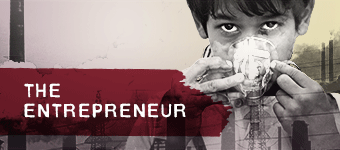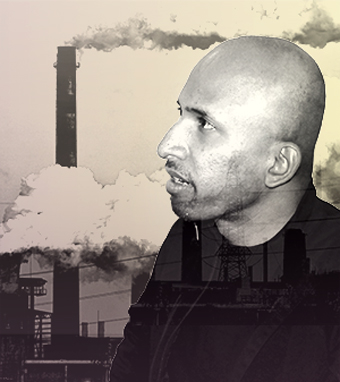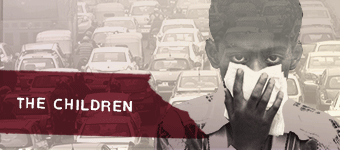Fresh blood at the fed actually making some degree of sense.. He'll get whipped into shape eventually..
-----------
[h=1]Fed's Kashkari Floats Breaking Up Big Banks to Avert Meltdown - Bloomberg Business[/h]The former U.S. Treasury official who led the 2008 bailout program for the nation’s biggest banks says in his new role at the Federal Reserve that Congress and regulators should consider breaking them up to protect the financial system from another crisis.
Federal Reserve Bank of Minneapolis President Neel Kashkari, speaking Tuesday in Washington, said his regional Fed bank will study ways to toughen U.S. banking laws to prevent another financial crisis.
Regulators should consider options including breaking up the nation’s largest financial institutions, loading them up with “so much capital that they virtually can’t fail” and taxing leverage to make the system safer, he said. Tougher oversight will require new legislation, he added.
QuickTake Too Big to Fail
“The biggest banks are still too big to fail and continue to pose a significant risk to our economy,” Kashkari, who managed the U.S. Treasury’s $700 billion Troubled Asset Relief Program for rescuing banks in the crisis, said in his remarks. It was his first public speech since joining the Fed on Jan. 1 as its newest policy maker.
While Kashkari’s position fits with populist sentiment that has driven the rise of presidential candidates including Democrat Bernie Sanders, it’s at odds with top Fed leaders including Chair Janet Yellen, who isn’t calling for dramatic steps such as breaking up large banks. Such changes would also face a steep uphill battle to adoption by the Republican majority in Congress, which wants to roll back parts of the Dodd-Frank financial law passed in 2010, rather than go further as Kashkari proposes.
Kashkari’s remarks drew praise from Sanders. “Wall Street cannot continue to be an island unto itself, gambling trillions in risky financial instruments, making huge profits, assured that, if their schemes fail, the taxpayers will be there to bail them out," the Vermont senator said in an e-mailed statement.
Kashkari, who took over at the Minneapolis Fed following a failed run for governor of California as a Republican in 2014, compared the risk posed by big banks with that of a nuclear power plant in explaining why the government would probably have to bail out banks again in the event of another systemic crisis.
[h=3]‘Astronomical’[/h]“The cost to society of letting a reactor melt down is astronomical,” said Kashkari, who was a Goldman Sachs Group Inc. banker before joining the Treasury during the administration of Republican President George W. Bush. “Given that cost, governments will do whatever they can to stabilize the reactor before they lose control.”
Kashkari, 42, said the Minneapolis Fed will hold a series of events and collect public and financial-industry input before making proposals by the end of this year on how to address the issue.
Kashkari, asked about the economy and monetary policy after the speech, stuck to the Fed’s January statement and said if the reality ends up like the outlook, the U.S. will be headed in a “better direction.” He will be a voting member of the interest-rate-setting Federal Open Market Committee in 2017. The Fed’s Board of Governors in Washington sets policy for bank supervision, which is implemented by the 12 regional Fed banks including Minneapolis.
In testimony before Congress last week, Yellen said regulations imposed since the financial crisis have had “very substantial payoffs in the form of a much more resilient and stronger, better capitalized, more liquid banking system.”
Fed spokesman Eric Kollig declined to comment on Kashkari’s initiative.
[h=2]Watch Next: Here's Why 'Too Big to Fail' Is Still a Problem[/h]Here's Why 'Too Big to Fail' Is Still a Problem
[h=3]Dallas, St. Louis[/h]Kashkari joins several other regional Fed presidents outside of the major U.S. banking centers who have made similar statements about too-big-to-fail policy. Former Dallas Fed President Richard Fisher proposed that big banks be “restructured into multiple business entities,” while St. Louis Fed chief James Bullard has backed limiting the size of individual U.S. banks to a proportion of gross domestic product.
Kansas City Fed President Esther George, a former bank regulator, said in a 2014 interview that she was “disappointed but I guess not surprised” that the problem of too-big-to-fail banks remained and called for “meaningful consequences” for banks that don’t submit adequate “living wills,” or plans to be resolved if they were to fail.
Kashkari said Tuesday that the financial industry has “lobbied hard to preserve its current structure and thrown up endless objections to fundamental change.” He rejected the argument that U.S. banks would be at a disadvantage to competitors in nations with looser regulations, because the U.S. “should do what is right for our economy.”
-----------
[h=1]Fed's Kashkari Floats Breaking Up Big Banks to Avert Meltdown - Bloomberg Business[/h]The former U.S. Treasury official who led the 2008 bailout program for the nation’s biggest banks says in his new role at the Federal Reserve that Congress and regulators should consider breaking them up to protect the financial system from another crisis.
Federal Reserve Bank of Minneapolis President Neel Kashkari, speaking Tuesday in Washington, said his regional Fed bank will study ways to toughen U.S. banking laws to prevent another financial crisis.
Regulators should consider options including breaking up the nation’s largest financial institutions, loading them up with “so much capital that they virtually can’t fail” and taxing leverage to make the system safer, he said. Tougher oversight will require new legislation, he added.
QuickTake Too Big to Fail
“The biggest banks are still too big to fail and continue to pose a significant risk to our economy,” Kashkari, who managed the U.S. Treasury’s $700 billion Troubled Asset Relief Program for rescuing banks in the crisis, said in his remarks. It was his first public speech since joining the Fed on Jan. 1 as its newest policy maker.
While Kashkari’s position fits with populist sentiment that has driven the rise of presidential candidates including Democrat Bernie Sanders, it’s at odds with top Fed leaders including Chair Janet Yellen, who isn’t calling for dramatic steps such as breaking up large banks. Such changes would also face a steep uphill battle to adoption by the Republican majority in Congress, which wants to roll back parts of the Dodd-Frank financial law passed in 2010, rather than go further as Kashkari proposes.
Kashkari’s remarks drew praise from Sanders. “Wall Street cannot continue to be an island unto itself, gambling trillions in risky financial instruments, making huge profits, assured that, if their schemes fail, the taxpayers will be there to bail them out," the Vermont senator said in an e-mailed statement.
Kashkari, who took over at the Minneapolis Fed following a failed run for governor of California as a Republican in 2014, compared the risk posed by big banks with that of a nuclear power plant in explaining why the government would probably have to bail out banks again in the event of another systemic crisis.
[h=3]‘Astronomical’[/h]“The cost to society of letting a reactor melt down is astronomical,” said Kashkari, who was a Goldman Sachs Group Inc. banker before joining the Treasury during the administration of Republican President George W. Bush. “Given that cost, governments will do whatever they can to stabilize the reactor before they lose control.”
Kashkari, 42, said the Minneapolis Fed will hold a series of events and collect public and financial-industry input before making proposals by the end of this year on how to address the issue.
Kashkari, asked about the economy and monetary policy after the speech, stuck to the Fed’s January statement and said if the reality ends up like the outlook, the U.S. will be headed in a “better direction.” He will be a voting member of the interest-rate-setting Federal Open Market Committee in 2017. The Fed’s Board of Governors in Washington sets policy for bank supervision, which is implemented by the 12 regional Fed banks including Minneapolis.
In testimony before Congress last week, Yellen said regulations imposed since the financial crisis have had “very substantial payoffs in the form of a much more resilient and stronger, better capitalized, more liquid banking system.”
Fed spokesman Eric Kollig declined to comment on Kashkari’s initiative.
[h=2]Watch Next: Here's Why 'Too Big to Fail' Is Still a Problem[/h]Here's Why 'Too Big to Fail' Is Still a Problem
[h=3]Dallas, St. Louis[/h]Kashkari joins several other regional Fed presidents outside of the major U.S. banking centers who have made similar statements about too-big-to-fail policy. Former Dallas Fed President Richard Fisher proposed that big banks be “restructured into multiple business entities,” while St. Louis Fed chief James Bullard has backed limiting the size of individual U.S. banks to a proportion of gross domestic product.
Kansas City Fed President Esther George, a former bank regulator, said in a 2014 interview that she was “disappointed but I guess not surprised” that the problem of too-big-to-fail banks remained and called for “meaningful consequences” for banks that don’t submit adequate “living wills,” or plans to be resolved if they were to fail.
Kashkari said Tuesday that the financial industry has “lobbied hard to preserve its current structure and thrown up endless objections to fundamental change.” He rejected the argument that U.S. banks would be at a disadvantage to competitors in nations with looser regulations, because the U.S. “should do what is right for our economy.”
